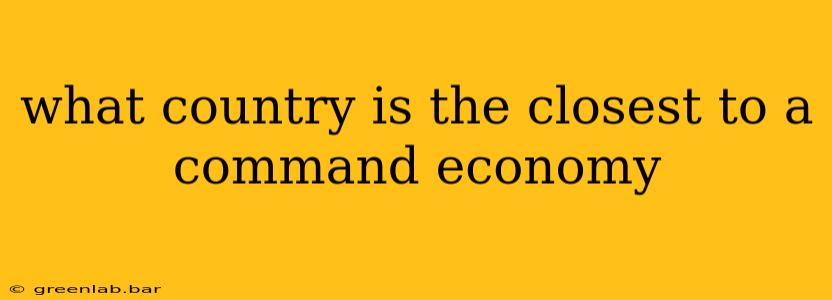Which Country Comes Closest to a True Command Economy? Unpacking a Complex Question
The question of which country is closest to a pure command economy is tricky. No nation today operates under a completely centralized, state-controlled economic system like the Soviet Union during its heyday. Instead, most economies blend aspects of command, market, and traditional systems to varying degrees, creating mixed economies. However, we can examine countries that exhibit the strongest characteristics of command economies, acknowledging the nuances and limitations of such a comparison.
Understanding the Command Economy Model:
A pure command economy, also known as a centrally planned economy, is characterized by:
- Centralized Planning: The government dictates production quotas, pricing, and resource allocation.
- State Ownership: Key industries and resources are owned and controlled by the state.
- Limited Consumer Choice: Production focuses on meeting state-defined needs, not consumer demand.
- Lack of Market Competition: The government suppresses or eliminates private enterprise.
Countries Exhibiting Strong Command Economy Traits (with caveats):
While no country perfectly fits the model, several have historically exhibited, or currently exhibit, strong command economy characteristics:
North Korea: A Case Study in Centralized Control
North Korea is often cited as the closest example to a command economy in the modern world. The government exerts almost absolute control over the economy, dictating production targets, setting prices, and owning virtually all means of production. Consumer choice is extremely limited, and private enterprise is heavily suppressed. However, even within North Korea, some informal market activity exists, indicating a departure from a purely command-based system.
Cuba: A Shifting Economic Landscape
Cuba, though undergoing significant economic reforms, retains a substantial degree of state control over its economy. Many key industries remain state-owned, and central planning continues to play a significant role. However, the government has gradually allowed for more private enterprise and market mechanisms in recent years, creating a mixed economy that is evolving away from a purely command structure.
Vietnam: A Transitioning Economy
Vietnam provides a compelling example of a country transitioning from a centrally planned to a more market-oriented economy. While the government still maintains significant influence and ownership in key sectors, the country has embraced market reforms, leading to increased private sector participation and economic growth. It is a testament to the complexities of economic systems and the gradual nature of transitions.
The Challenges of Categorization:
It’s crucial to understand that classifying economies on a simple spectrum (command vs. market) is an oversimplification. The reality is far more nuanced. Many countries incorporate elements of both systems, creating mixed economies. The degree of state intervention, the extent of market liberalization, and the role of private enterprise vary greatly.
Conclusion:
While North Korea arguably comes closest to a pure command economy among existing nations, even its system isn't entirely without market influences. The complexities of modern economies make definitive categorization difficult. Countries like Cuba and Vietnam demonstrate the dynamic nature of economic systems, showcasing ongoing transitions and adaptations away from rigid command structures. The ongoing evolution of global economies makes this a constantly shifting landscape.

